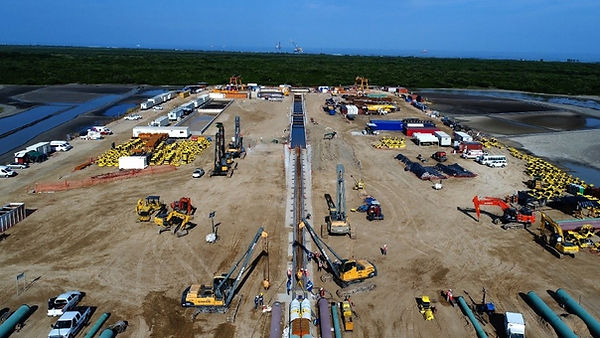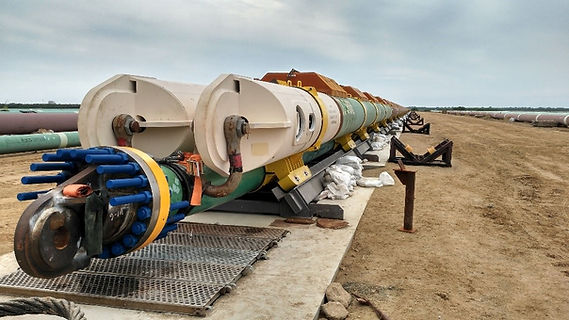
GAS PIPELINE
Gas pipelines are pipelines that serve to transport combustible gases on a large scale between countries, and within them, between different regions. Gas pipelines usually run underground, but they can also be submarine type supported on the seabed to connect exploitation platforms, island territories or more efficient solutions for connections between regions.
A key point of the gas and oil pipeline projects is the land-sea connection, where the microtunnel has emerged as a relevant solution thanks to its technological innovation and low environmental impact in the area.
The method for the construction of the tunnel consists of pushing the casing pipe from a launching shaft and driving it into the ground while the tunnel boring machine opens a gap taking advantage of the thrust transmitted by said lining.

The length of the tunnel is conditioned by the availability of the equipment implantation area and the tunnel exit point into the sea, where the exit pit is dredging for the recovery of the TBM.

In addition to the tunnel and the launching shaft, an access ramp is used for the launch of the pipeline or line, which will move to the entrance of the tunnel at the bottom of the sea for its connection with the submarine line.

For the installation of the line inside the tunnel, a traction cable connected to a cable winding equipment of a vessel with sufficient capacity to pull and move the conduction towards the sea is needed. Because this oversized cable is not easy to manipulate, and less so inside a microtunnel built for a gas pipeline, a guide cable from ground with a smaller diameter is used where it is transported from the ground to the end of the microtunnel where the tunnel boring machine is located.
The next step is to flood the tunnel and equalize the hydrostatic pressure between the attack shaft and sea level to disconnect the recovery module or bulkhead from the tunnel. From this moment, the team of divers will connect the traction cable to the guide cable at the exit point of the TBM, giving way to the recovery of the traction cable from land until connecting it to the conduction located on the launch ramp.
The last phase would be the launch of the pipeline by pulling the cable from the vessel to its final connection with the gas pipeline anchored at sea.

In the following image you can see the section of the tunnel with the conduction located inside and another image with the conduction prepared for launching.


Bibliography:
-
AETOS. Journal of Public Works. Pages 65-75.
-
aetos.es/wp-content/uploads/2021/10/2020_octubre_3624.pdf
-
YEPES, V. (2014). Machinery for drilling and drilling. Notes of the Universitat Politècnica de València, Ref. 209. Valencia, 89 pp
-
Palmer, Andrew C.; King, Roger A. Subsea Pipeline Engineering. 2nd Edition. 2008. ISBN: 9781593701338


